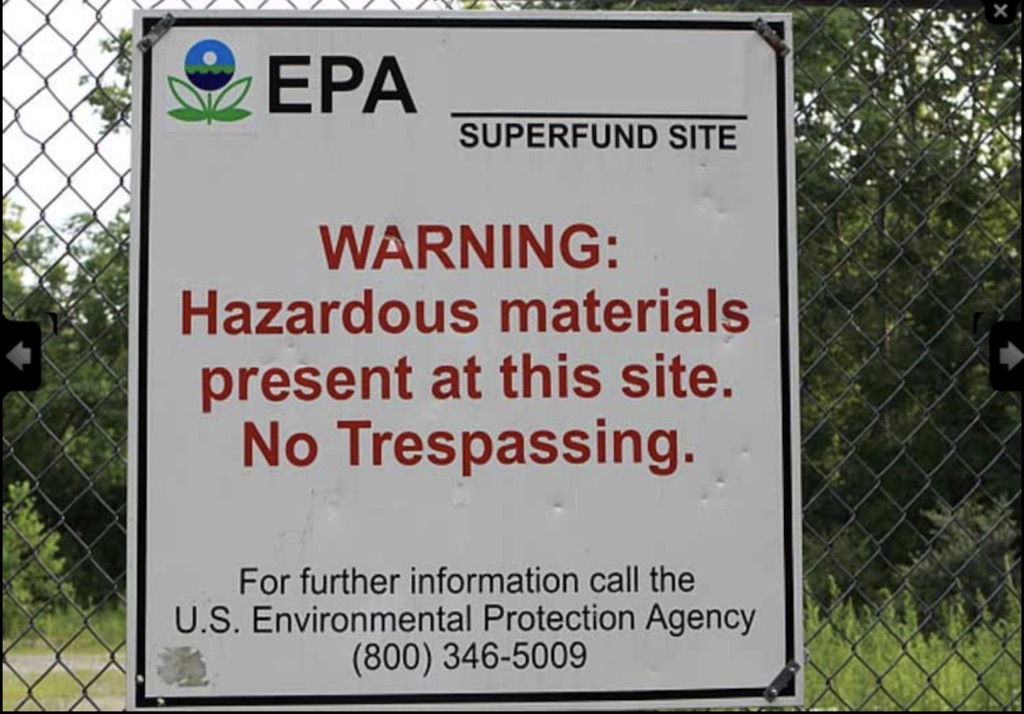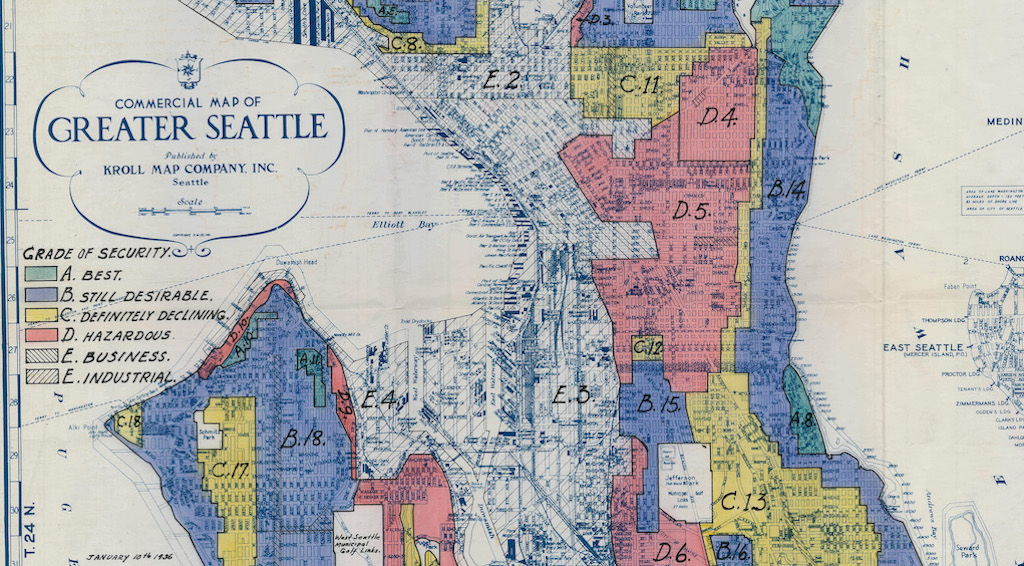Hundreds of studies since the 1970s have concluded that industrial pollution and hazardous waste sites across the country are located disproportionally where people of color and low-income families are living.
One big question, pondered for years by environmental historians and sociologists, has become known as the chicken-or-egg debate: Did polluting industries intentionally locate their facilities in disadvantaged neighborhoods, or did vulnerable populations move in next to these sources of pollution?
Every community has its own unique history, and today’s land uses reflect a multitude of social, economic and political forces that shaped each place over time, said Millie Piazza, environmental justice senior adviser for the Washington Department of Ecology. Environmental justice involves confronting the forces that still exist, she said.
Half the people who live within a mile of federal Superfund sites are from minority racial groups, although minorities make up only 40 percent of the overall U.S. population.
“We have to realize that history is important in order to deal with the problems of today,” Piazza said. “If we keep supporting systems that led to these problems (of racial and economic injustice), then we will keep getting the same results.”
Trying to make generalizations across the state or nation becomes a matter of statistics. Many studies of environmental justice have looked at the makeup of various populations and their proximity to toxic sites or industrial facilities, or sometimes to the levels of air pollution or other environmental factors. According to the Environmental Protection Agency, half the people who live within a mile of federal Superfund sites are from minority racial groups, although minorities make up only 40 percent of the overall U.S. population.

Photo: USEPA
These are like snapshots of current conditions. They can define today’s inequities, but they don’t speak to history. In 2015, environmental justice experts Paul Mohai at the University of Michigan and Robin Saha at the University of Montana tried to connect the dots by looking at more than 300 hazardous waste facilities sited throughout the country between 1966 and 1995. In the first nationwide study of its kind, they examined community makeup before and after each facility went in.
Not only did they find more facilities being placed in disadvantaged communities, they found that the facility owners were choosing to locate in communities that were already transitioning to a population with fewer white residents and more low-income families and people of color.
“Although we found some evidence of post-siting demographic changes, they were mostly a continuation of changes that occurred in the decade or two prior to siting,” the researchers wrote in an article in Environmental Research Letters. Their findings suggest that “neighborhood transition serves to attract noxious facilities rather than the facilities themselves attracting people of color and low-income populations.”
Their study showed that white families were moving out before the hazardous waste facilities were located in these neighborhoods, and they continued to move out after that. The researchers concluded that the neighborhoods were already established as low-income and communities of color before the facilities chose to locate there.
While these findings reveal a fairly consistent pattern for hazardous waste facilities built in modern times, the study was not designed to consider the vast majority of toxic sites, the result of chemical spills and waste-dumping going back 100 years or more. Nor does the study examine what triggered the initial shift in these areas toward a nonwhite, low-income population.
Until the environmental movement of the ‘60s and ‘70s, many people did not recognize the health hazards of living close to industry, Saha said in an interview. In some urban areas, factory workers saw advantages of living close to their places of employment. Chemicals being released into the air, water and soil were a lesser concern, he said, although there was always the “push and pull of forces,” as families tried to find pleasant places to live at prices they could afford.
“As the service economy developed and industries declined, whites were able to move out,” Saha said. “The educational opportunities for African Americans were not the same. They were kind of left there, affected by socioeconomic forces of white flight, suburbanization and housing discrimination.”
Saha and hundreds of other researchers have studied the forces of discrimination, and many books have been written about the patterns of historical and modern racism. In a separate paper also published in 2015, Mohai and Saha describe the many forces put forth by various researchers to account for the disparate siting of hazardous waste facilities in communities of color and low-income. Mohai and Saha say these forces fall under three categories:
- Economic. This explanation, perhaps cited most frequently to account for disparate siting, focuses on the financial incentives in locating industries in communities where land is cheaper with easier access to transportation and low-cost labor.
- Sociopolitical. Some argue that business owners prefer to take the “path-of-least-resistance,” meaning they choose to locate undesirable businesses where residents are perceived to have little political clout, so their plans face less community resistance, less bad publicity and fewer startup delays.
- Racial discrimination. Researchers differ in their opinions about whether racial hostility is involved in siting industrial facilities and hazardous waste sites. But, even without intent, institutional actions of the past can linger as adverse conditions in the present.
While each community has been uniquely molded by different forces, decades of effort by white majorities to stay separate from other racial and ethnic populations has helped determine today’s demographic patterns. In cities large and small all over the country, methods of enforcing segregation ranged from powerful zoning laws to social and physical aggression against families that moved into white neighborhoods.
Unfair housing practices
Various authorities, including the U.S. Commission on Civil Rights, have described unfair housing practices described below that have shaped today’s landscape.
Zoning
In the early 1900s, some of the first zoning laws called for keeping out “undesirable” elements, specifically racial and ethnic minorities. Such “exclusionary zoning” was eventually ruled unconstitutional, but other types of zoning encouraged high-density housing and industrial uses where people of color were living. Such zoning, often still in place, affects property values and can lead to decay of residential areas while allowing new polluting industries to locate in areas already affected by pollution.
Covenants
In 1917, after the U.S. Supreme Court declared exclusionary zoning unconstitutional, private developers and community groups established racially restrictive covenants on large and small tracts of private property in residential areas. Typical language running with the deed: “Hereafter, no part of said property or any portion thereof shall be . . . occupied by any person not of the Caucasian race…” In 1948, the U.S. Supreme Court ruled that such covenants were unconstitutional.
Redlining
The National Housing Act of 1934 was designed to halt the flood of home foreclosures during the Great Depression. One program created in the mortgage-system overhaul produced “residential security maps” with color codes depicting credit risk in 239 cities. Black neighborhoods were routinely outlined in red — representing the highest risk to mortgage lenders. Consequently, Black renters often could not get loans to buy homes in these neighborhoods, and homeowners were unable to fix up their houses. If they did manage to get a loan, payments were higher and any equity gains came slowly. Redlining was outlawed in the Fair Housing Act of 1968.
Steering
Real-estate agents have been known to direct people to particular neighborhoods based on the buyer’s race, religion or ethnicity. Black clients were likely to be shown houses only in communities of color. Although outlawed by the Fair Housing Act of 1968, recent studies have shown that white buyers are still being shown considerably more options among homes on the market than equally qualified Black or Asian buyers.
While these practices declined over time, racial segregation and “concentrations of poverty” are still prevalent throughout the country, according to a letter from the Civil Rights Commission dated Feb. 28, 2020. “Modern-day policies and practices in housing that tend to result in discriminatory effects and entrenched residential segregation persist,” states the letter, calling for stronger anti-discrimination regulations and greater government enforcement.





